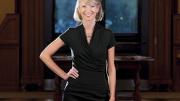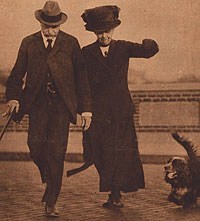 |
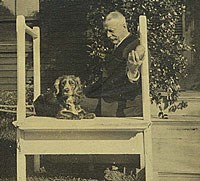 |
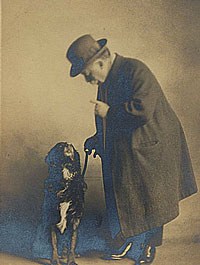 |
| Photographs Courtesy of Harvard University Archives. Photograph of Bronze Statue Courtesy of the Harvard Univerxity Portrait Collection, 2003 President and Fellows of Harvard College, Photograph by Junius Beebe. |
When Lowell retired, 70 years ago, the class of 1933 gave him a bronze sculpture of Phantom, the work of Bashka Paeff. A Boston-based artist born in Minsk, Paeff is best known for her Maine Sailors and Soldiers Memorial, which travelers see as they cross the bridge from Portsmouth, New Hampshire, to Kittery, Maine. She also sculpted President Warren G. Harding's Airedale, Laddie Boy. Phantom, now part of the Harvard University Portrait Collection, sits by the fireplace in the Senior Common Room at Lowell House.
The late Taggart Whipple '34, who witnessed the sculpture's presentationan event that caused a few tears to glisten on Lowell's cheekswrote of it in a letter in the November-December 1983 issue of this magazine: "To appreciate the moving effect, one must realize that President Lowell was a figure of austere reserve. Most of us saw him only striding through Harvard Yard under a spotless pearl-gray homburg, with the brim turned up and edged in silk. His mustache and stiff collar were usually set off with a black suit. Phantom was often trotting at his side. 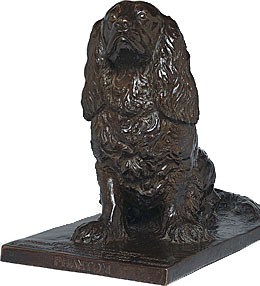
"The statue was unveiled in the Harvard Stadium where the senior class and a few others were gathered on the grass a day or so before Commencement (a customary part of the pre-graduation ceremonies in those days). Phantom had died earlier in the year. The unveiling obviously came as a total surprise to President Lowell. After a short silence, gazing at the statue, he said in a most feeling tone 'Dear old dog.'
"He then proceeded to acknowledge that Phantom was probably better known than he, at least in the Yardbecause one day when Phantom had run away an undergraduate came panting up to President Lowell in the Yard with the dog in his arms, and said in a worried tone, 'Please, sir, can you tell me where I can find President Lowell? I have just discovered his dog wandering around lost.'"


